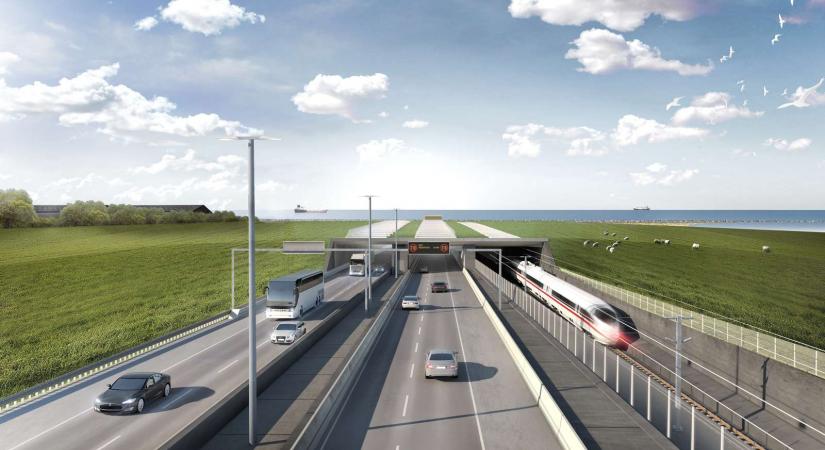How the connection to the Fehmarn Belt Link is being built on the German side

Preparations for the upcoming four-lane road connection to the Fehmarn Belt Link are now visible in the northern German landscape.
The construction of the tunnel portal on Fehmarn has been visible for several years, and now forest clearing has begun in preparation for the future four-lane road connection to the fixed link between Denmark and Germany.
As we move into 2025, the German project organization DEGES – Deutsche Einheit Fernstraßenplanungs- und -bau GmbH – is taking stock of the German construction work related to the Fehmarn Belt Link.
DEGES is managing the construction work on the German mainland and on Fehmarn Island in three projects:
- Construction of the road section from Heiligenhafen to Fehmarnsund
- Building of a Fehmarnsund tunnel, and
- The connection at Puttgarden to the Fehmarn Tunnel
Expansion of B207 to a four-lane motorway
The work to expand the 16.3 km long section of the B 207 on the German mainland, from Heiligenhafen Ost to Fehmarnsund, is now underway with forest clearing and cable laying.
The section will be expanded into a four-lane motorway with a hard shoulder, and the work is expected to be completed by 2027/2028, according to DEGES, which states that the expansion will improve traffic safety and increase capacity. The overall goal is to reduce traffic jams, particularly during summer holidays and travel season.
Construction of a Fehmarnsund Tunnel
The current road and rail connection between the German mainland and Fehmarn Island crosses the 963-meter-long Fehmarnsund Bridge, which was opened in 1963.
Studies have shown that the bridge will not be able to withstand future traffic loads, and threfor it has been decided on the German side to construct a 1.7 km long submerged tunnel with four lanes for road traffic and two tracks for trains.
Construction work has not yet started, but the tunnel is expected to be completed and ready for use by 2029, alongside the completion of the Fehmarn Tunnel.
The listed Fehmarnsund Bridge – also known as the “Hanging Bridge” – will be renovated so that it can continue to be used by pedestrians, cyclists, and slow traffic in the future.
Connection to the Fehmarn Tunnel
Denmark is responsible for the planning, construction, financing, and operation of the fixed Fehmarn Belt connection, as well as the expansion of the Danish approach.
The German project organization DEGES is supporting the construction of the two tunnel tubes for road traffic on the German side, where work on the construction of the tunnel portal in Puttgarden began in 2021.
The work on the connection to the Fehmarn Tunnel in Puttgarden is expected to be completed in parallel with the commissioning of the Fehmarn Tunnel in 2029, according to DEGES.





